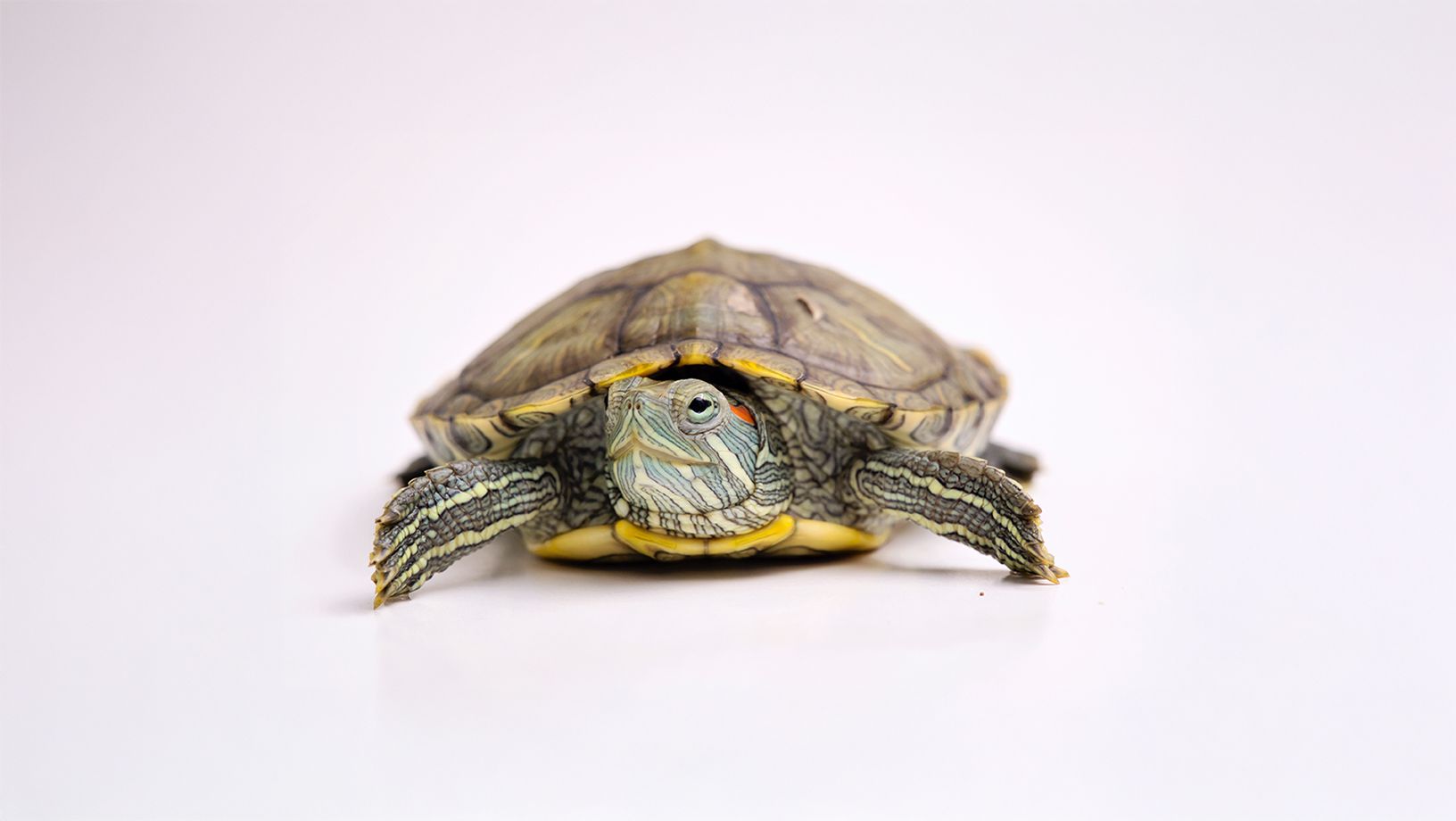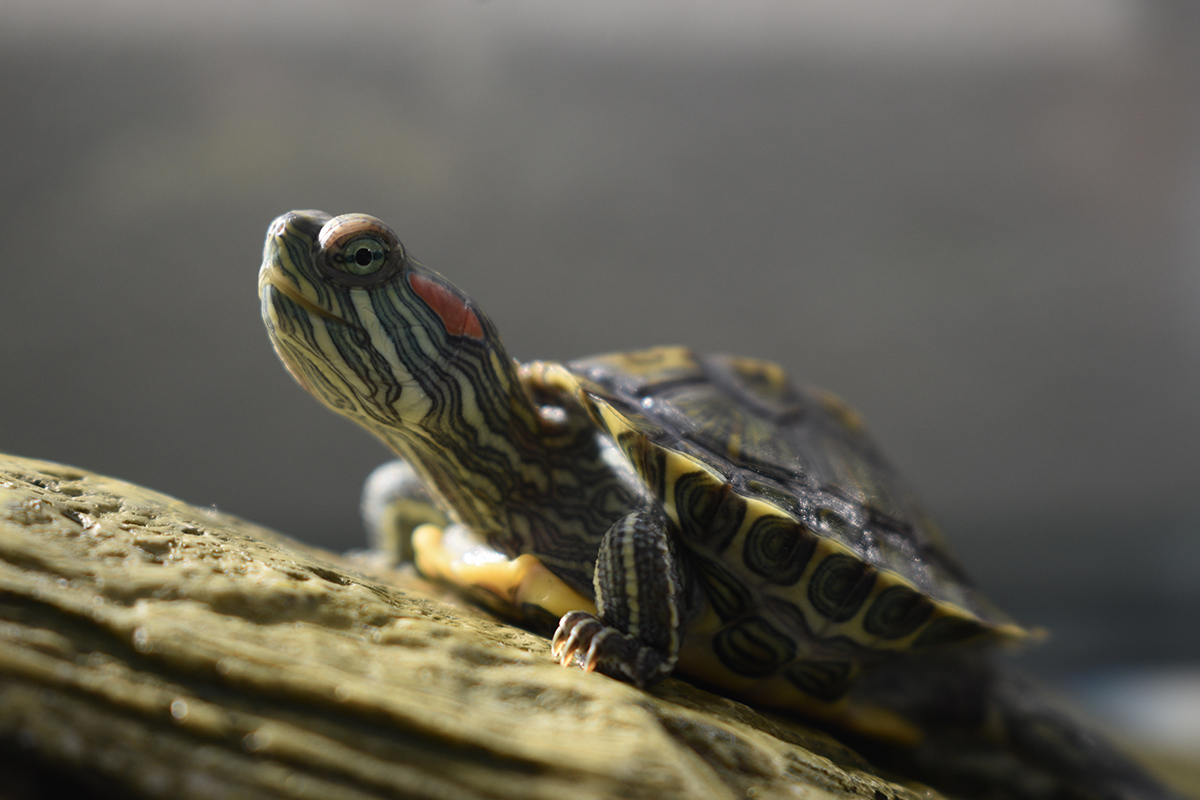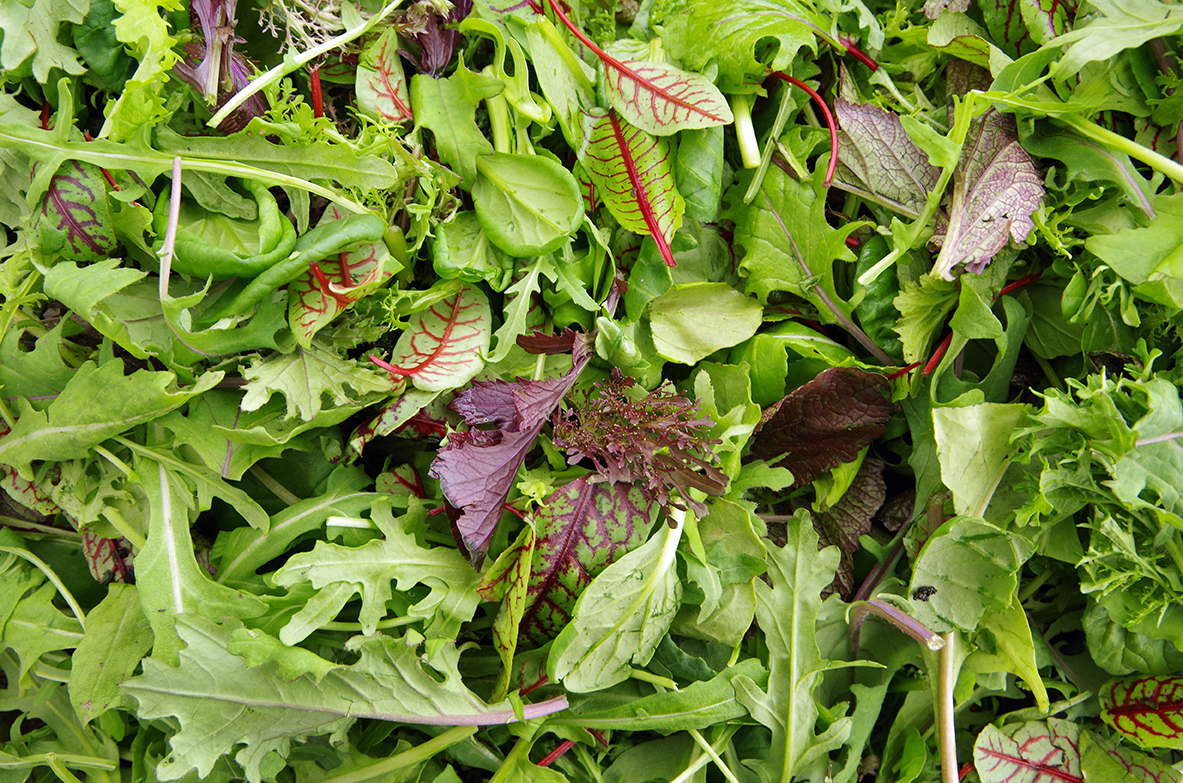Red-Eared Slider Turtle Care Guide

In this Article
Fierce and Interactive
Red-eared sliders are semi-aquatic turtles that are native to the midwestern United States. They are very popular in the pet turtle community due to their interesting coloration and bold personality. They get their “slider” name because they are known for “sliding” off rocks and logs in the wild when startled.
Size: Red-Eared Slider turtles (RES) can grow up to 12” long, with adult males being slightly smaller at 8”-9” and adult females averaging 10”-12”
Scientific Name: Trachemys scripta elegans
Lifespan: On average, Red-Eared Slider turtles live about 20 years, but with proper care they can live beyond 25 years!
Diet: Aquatic and semi-aquatic turtles are omnivores and eat various insects as well as plants.
Behavior: Red-Eared Slider turtles are intelligent and curious animals. They are notoriously food-motivated and have been known to aggressively “beg” for food. RES can also be escape artists and have been known to try to climb out of their enclosure! Temperament: Red-Eared Sliders, are not very fond of being handled. However, they can learn to recognize their owners and may swim over when you approach or beg for food. They can be housed together, but care should be taken as turtles can become aggressive and territorial with each other if they do not have enough space or hiding places.
Note: All turtles are capable of biting. Use care when interacting with them, especially during feeding, when a finger may be mistaken for food.
Setting up Your Red Eared Slider Turtle Habitat

Typical Turtle Aquarium Includes:
- Glass tank
- Tight-fitting tank cover
- Light fixture for
- Basking light
- UV-B Light
- Ambient Lighting
- Thermometer
- Hygrometer
- Appropriately-sized gravel or sand substrate
- Gravel must be too big to fit in the turtle’s mouth
- Dock or dry area
- Décor for hiding and enrichment
- Live or artificial plants
- Heater
- Filter
Habitat Setup
Red-Eared Sliders are considered semi-aquatic, meaning they live on both land and in water. Semi-aquatic turtles can live alongside fish too large to fit in their mouths and can be housed in a pond or aquarium. Use caution when housing turtles with fish as turtles will eat any small fish in their habitat.
Choose and Set Up the Habitat
- Pick your setup: A large glass tank is ideal. For RES, you’ll need to create a basking dock above the waterline.
- Size matters: Follow the general rule of 10 gallons per inch of shell length— and increase this if housing more than one turtle. Remember, your adult turtle may need a 125-gallon tank depending on its size when full grown!
- Substrate options: Use sand or gravel larger than your turtle’s head to avoid ingestion. Going substrate-free is also safe and easier to clean but limits natural digging behaviors. Substrate may also help maintain water quality since it is another surface for beneficial bacteria to grow on.
- Décor and enrichment: Add large rocks, sturdy plants, driftwood, or turtle-safe ornaments. Make sure your turtle has plenty of hiding spots and places to climb out of the water. Turtles need a place to leave the water and dry out at times.
- Lighting and heating: Install a UVB bulb and basking bulb above the dry dock. Turtles need a 12-hour day/night cycle, so use a timer to automate it.
- Two thermometers should be used above the water: one in the basking area and another in a cooler above water area.
- Filtration and temperature: Choose a filter rated for your turtles appropriate for your tank size, and use an aquarium heater to maintain water at 75–86°F
- Another thermometer should measure your water temperature.
- Cover securely: Use a tight-fitting lid and leave at least 6" of vertical space between the tallest point in the tank and the top to prevent your turtle from escaping.
2. Prep the Tank Before Adding Your Turtle
- Prepare your space: Place the aquarium on a flat, stable surface that can support its full weight - water weighs 8.3 pounds per gallon.
- Rinse and place décor: Rinse all substrate and decorations with tap water (never soap), then add to the tank.
- Substrate must be either sand or gravel larger than your turtle’s head. If the gravel is too small, your turtle may accidentally eat the rocks and this can cause a gastrointestinal blockage, potentially requiring surgery to resolve.
- You can choose to have no substrate in your turtle tank and instead use turtle safe decorations that can be removed during cleaning.
- Add water and conditioner: Fill with tap water and use a water conditioner to remove chlorine and chloramines. If your home uses a water softener, use a tap source that bypasses it.
- Install and test equipment: Set up the heater, filter, and thermometer per manufacturer instructions. Add the hood and lighting and set lights on a 12-hour cycle using a timer for consistency.
- Turtles need a UV-B light and a heat source in addition to ambient lighting for your tank.
- Let the tank stabilize: Run the system for at least 24 hours to ensure all equipment works and the water temperature is stable.
- Begin cycling the tank: Add a beneficial bacteria starter and follow a fishless cycling process to reduce stress.
- Learn more about fish-less cycling in Setting Up an Aquarium.
- Monitor water quality daily: During cycling, test water regularly. Perform a water change if ammonia or nitrite is above 0 ppm or if nitrate exceeds 20 ppm. Always add water conditioner after each change.
- Quarantine new additions: To protect your turtle, quarantine new additions for 30 days in a separate, cycled setup.
Water Depth & Quality:
- Red-Eared Slider turtles are avid swimmers in the wild and their water should be at least 2x the turtle’s shell length for safety and mobility.
- The minimum depth of water in your Red-Eared Slider habitat is twice the length of your turtle’s shell. So, if your turtle’s shell is 7” long, you need water at least 14” deep so they are able to turn and flip in the water. This ensures that your turtle is able to right themselves in the water reduces risk of drowning.
- Water depth should be 6–8 inches, mimicking the shallow habitats these turtles prefer in the wild.
- Change 50% of the water weekly; larger changes (75–90%) may be needed to maintain adequate water quality.
- Ideal levels for water quality parameters:
- Ammonia and Nitrite: 0 ppm
- Nitrate: Less than 20 ppm
- Use a water conditioner with every change.
- Test water weekly to track parameters and ensure excellent water quality.
For more information on creating the perfect turtle tank, check out:
Ideal Temperatures
DAY TEMPERATURE: (Cool Side) 75-85° F (24-29° C)
DAY TEMPERATURE: (Basking Spot) 90-95° F (32-35° C)
NIGHT TEMPERATURE: 65-75° F (18-24° C)
WATER TEMPERATURE: 75-86° F (24-30° C)
What do Red-Eared Slider Turtles Eat?

Red-Eared Slider turtles are omnivorous (meaning they eat both plant material and animal/insect protein). Juvenile turtle diets tend to lean more carnivorous (meat/insect focused). As they mature, their diet shifts to a more balanced mix of plant matter and animal or insect protein. Red-Eared Sliders are notoriously messy eaters, so you may want to consider setting up a feeding area or even a separate feeding tank to help minimize the mess.
- PELLETS
- Pellets are your turtle's primary food source. Remove any uneaten pellets after 15 minutes
- Offer pellets once a day for young turtles
- Offer pellets every other day to every 2-3 days for adults
- VEGETABLES
- Feed your turtle dark leafy greens and vegetables 3-4x a week.
- INSECTS AND FEEDER FISH
- Offer earthworms, crickets, mealworms, waxworms or feeder fish 1x a week
- It is important to “gut-load” your feeder insects and/or fish. Gut-loading involved feeding your feeder insect or fish a high quality diet designed to support your turtle’s health for 24-48 hours prior to offering to your pet.
Depending on your turtle’s diet, vitamin supplementation may be necessary. Always consult a reptile veterinarian before offering supplements to avoid both deficiency and toxicity.
Note: Do not feed your pet wild insects, as they may be carrying parasites or may have come into contact with pesticides that can make your pet very sick.
When should I test my water quality?
- Turtle is sluggish, near the bottom of the tank
- Turtle is at the top or spending a lot of time out of the water
- Turtle is not eating
- Sudden behavior changes in your turtle
- Water is cloudy
- Water smells funny
PetSmart offers free water quality testing and one of our knowledgeable associates can help you get your system balanced.
When to see a vet
In addition to regularly scheduled appointments, contact your reptile veterinarian if you notice the following signs:
- Runny droppings for more than two days
- Eating or drinking less; weight loss
- Swollen joints or reluctance to move
- Discharge from the eyes, nose or mouth
- Shell abnormalities or defects
- Skin discoloration
- Avoidance of the basking area; more time spent hiding
- Increased basking time
- Decreased frequency of droppings
- Abnormal swimming or swimming on side
If your turtle shows any of the signs above, we recommend using the “Find a Vet” tool at arav.org to locate a qualified veterinarian in your area.
NOTE: Most, if not all, reptiles carry Salmonella bacteria in their intestinal tract and intermittently or continuously shed these bacteria in their feces, so they are unsuitable pets for very young children and those with compromised immune systems. Good hygiene must always be practiced around all reptiles, and hands should be washed before and after interacting with all reptiles.
Shopping list
- Appropriately sized aquarium/turtle tub
- Screened lid
- UV-B bulb and fixture
- Basking bulb and fixture
- Aquarium heater
- Aquarium substrate and gravel vacuum if using substrate.
- Substrate must be either sand or rocks larger than your turtle’s head
- Habitat thermometer and aquarium thermometer
- Canister filter
- Water testing kit or strips
- Water conditioner/dechlorinator
- Beneficial bacteria starter
- Algae cleaning pad or scraper
- Sturdy turtle dock
- Branches and non-toxic plants
- Pelleted food
- Earthworms, crickets, mealworms and waxworms, feeder fish
Ready to learn more?
This guide is a great starting place, but we encourage you to do more research on the individual species that you are keeping so that you can be as successful as possible with your aquarium!
Related guides:
Vet Assured™: Pets purchased at PetSmart are part of our exclusive Vet Assured™ program, designed by PetSmart veterinarians to help improve the health and well-being of our pets. Our vendors meet a high
standard in caring for pets and screening them for common illnesses. This program also includes specific standards for in-store pet care.
The PetSmart Promise: If your pet becomes ill during the initial 14-day period, or if you’re not satisfied for any reason, PetSmart will gladly replace the pet or refund the purchase price.
Safety tips for you and your pet:
1. ALL ANIMALS can potentially carry viral, bacterial, fungal, and parasitic diseases contagious to humans. 2. Thoroughly wash your hands with warm, soapy water before and after contact with any pet or its habitat. 3. Adults should assist children with hand washing after contact with a pet, its habitat or aquarium water. 4. Always add a dechlorinator or water conditioner and bacteria starter to tap water before adding it to the aquarium. 5. Do not use soaps or detergents to clean aquarium or decor, since they are toxic to fish. For more information, visit petsmart.com, cdc.gov/healthypets, or contact your veterinarian.
This care guide contains general information for the proper care of your pet, but is not comprehensive and is not a substitute for veterinary advice or care. PETSMART and VET ASSURED are trademarks of PetSmart Home Office, Inc. © 2025 PetSmart. All rights reserved.
standard in caring for pets and screening them for common illnesses. This program also includes specific standards for in-store pet care.
The PetSmart Promise: If your pet becomes ill during the initial 14-day period, or if you’re not satisfied for any reason, PetSmart will gladly replace the pet or refund the purchase price.
Safety tips for you and your pet:
1. ALL ANIMALS can potentially carry viral, bacterial, fungal, and parasitic diseases contagious to humans. 2. Thoroughly wash your hands with warm, soapy water before and after contact with any pet or its habitat. 3. Adults should assist children with hand washing after contact with a pet, its habitat or aquarium water. 4. Always add a dechlorinator or water conditioner and bacteria starter to tap water before adding it to the aquarium. 5. Do not use soaps or detergents to clean aquarium or decor, since they are toxic to fish. For more information, visit petsmart.com, cdc.gov/healthypets, or contact your veterinarian.
This care guide contains general information for the proper care of your pet, but is not comprehensive and is not a substitute for veterinary advice or care. PETSMART and VET ASSURED are trademarks of PetSmart Home Office, Inc. © 2025 PetSmart. All rights reserved.

